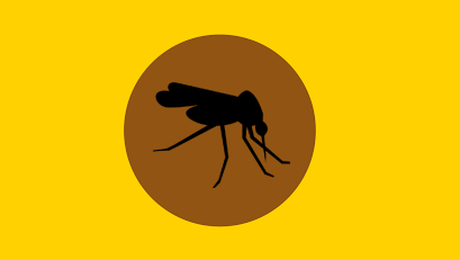Aedes aegypti is the principal mosquito vector of dengue viruses. It is responsible for dengue transmission and dengue epidemics. The female Aedes aegypti becomes infected with dengue virus when it bites a person with dengue virus in their blood. When a mosquito feeds on the blood of dengue virus infected person, the virus enters into the blood stream of the mosquito making it a dengue vector.
Important information about dengue mosquito : Aedes aegypti
Physical appearance of Aedes aegypti
Aedes aegypti is a small, dark mosquito that can be identified by the white bands on its legs and a silver-white pattern of scales on its body. It is a small to medium sizes mosquito, approximately 4mm to 7mm.
Climatic condition for the survival of Aedes aegypti
Temperature, precipitation, and humidity are critical to this mosquito survival and reproduction. It flourishes in tropical and subtropical regions all over the world, mainly between the latitudes of 35°N and 35°S where the winter temperature is no colder than 10°C. It requires warm climate for living and is unable to survive in cold winters. That is why dengue fever spreads mostly during summer and rainy months when the moisture content and temperature is usually high.
Habitat of Aedes aegypti
Dengue mosquito flourishes in areas close to human population and lives indoor in dark and cool areas like closets, under bed, behind paintings and curtains etc. Water left in storage containers, flower pots and vases , old and discarded tires, plates under potted plants, water cooler, clogged drains and gutters, pet bowls, birdbaths, septic tanks, wells etc. that are close to places where human population are ideal habitats for this mosquito. These dwellings provide breeding grounds for adult female Aedes aegytpi and are responsible for dengue transmission and epidemics.
Food habit and energy source for Aedes aegypti
Plant nectars, fruit juices and other plant based juices are the main source of energy for male and female adult mosquitos. However the female aedes requires human blood in order to produce eggs. Each female mosquito can lay multiple batches of eggs during its lifetime and consumes several blood meals before laying a batch of eggs. The female Aedes aegypti becomes infected with dengue virus when it bites a person with dengue virus in their blood. When a mosquito feeds on the blood of dengue virus infected person, the virus enters into the blood stream of the mosquito making it a dengue vector. Once the virus enters the mosquito’s system, it spreads through the mosquito’s body over a period of eight to twelve days. After this period, the virus infected mosquito can transmit the dengue virus to another person via bite.
Breeding and reproduction cycle of Aedes aegypti
It generally spends its entire life in and around the houses where it hatches eggs. The life cycle of Aedes aegypti primarily consists of four stages: egg, larva, pupa and adult mosquito. The entire development of aides from an egg to adult occurs in as little as 7-8 days. After developing into an adult mosquito it lives around three weeks.
Biting behaviour of Aedes aegypti
Dengue mosquito Aedes aegypti bites primarily during the day. This species is most active for approximately two hours after sunrise and several hours before sunset, but it can bite at night also. Female Aedes mosquito approaches its victim from behind and bites them without being noticed, usually on the ankles and elbows. It prefers biting people but it also bites other mammals like dogs and other domestic pets.
- Content source:
- www.who.int/denguecontrol
- www.cdc.gov/Dengue
- Picture source :
- www.drk-solutions.blogspot.in
- www.eliminatedengue.com
- www.denguepatrolskptm.blogspot.com
- www.denguefever2012.blogspot.com
- Cover picture source: www.escoteirosrs.org.br

